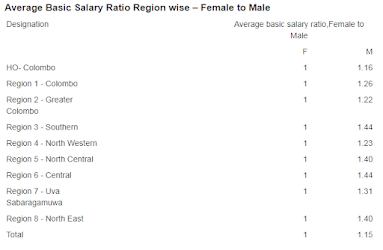Human resource planning is a concept that
is traditionally used by the organizations and it is used by the organizations
to recruit or select the right person at right time to the job. In traditional
methods the human resource planning is only concern to short term and the it
was highly dictated the line management. But due to the increase in the
demographic, environmental instability, dynamic changes in technology high
international competition have make a greater impact on the human resource
planning. The planning of the human resource explains the interaction of the
human resource planners or the top managers with the line managers (Jackson,
1990).As for the company NDB the top management is interact with the line
managers or the front line managers. By interacting or cascading the power to
the lower level employees’ innovative business methods will evolve and the
employees will also motivate to do their job perfect as much as possible.
Organizations should be realizing that the human resource planning is an
important factor the yield the business, and also n recent the business take
this factor into consideration and they addressing the human resource that is
needed to the organization, they have developed short term as well as long term
solutions to maintain a proper human resource within the organization (Jackson,
1990). The human resource planner is a separate job of an organization and the
particular person go through different business researches and identify the
best related solution that can be installed according to the prevailing
business situation. They will fulfill the needs of the organization regarding
the human resource and also they will influence on the direction of the company
too.
In the recent years the global business
takes into the consideration of the human resource planning to the future of
the organization. Where the factors that will affect the human resource
planning of the companies throughout the globe. There are two factors that will
affect the human resource planning of an organization, these factors can be
divided as the external business factors and the internal business factors
which will affect the human resource planning of the company NDB (Young Mok,
2014). Some of the external and internal factors which will affect the company
NDB are as follows,
· Labor cost assist to the organization
· How to increase the efficiency the productivity
of the company?
· Development regarding the employees
· Disciple in the organization
· Growth of the business
· Changes within the business
NDB is a leading financial company in
srilanka where the internal business factors such as growth of the business
will lead to maintain a proper human resource plan within the organization.
This will be processed as if the company is growing their business the
management will tends to implement innovative human resource plans to the
available and potential human resource of the company to achieve the goals and
the objectives of the organization. This will include the recruiting a new
person to the organization or training the existing employee up to the required
standards; there are several advantages and disadvantages of recruiting a new
employee and retaining the existing employees within the company. The new
employees will bring new blood to the organization and the existing employees
will know how to work and they do not needed induction but the new recruiters
needed a proper induction and training. And also when regarding to the recent
situation of covid 19 NDB has gone under a different plan to maintain their
liquidity. They have cut down HR related expenses and downsizing of the staff. And
also the company have make changes in their HR policies to adapt to the new
human resource planning methods, they tends to control the cost of labor
regarding their business practices in bad times to the company. They are into
the efficiency of the labor, labor productivity, management pf the payroll
costs, labor related costs. Human resource planning will also have affected by
the external business factors like technological factors, while technology is a
highly dynamic factor when regarding to the organization, technology should be
updated by the companies to deliver a valuable output to the customers so the
company NDB is playing a huge role in terms of introducing the latest
technology to their customers and achieve the goals and objectives of the
organization.
Aruna. (2019). researchgate.
Retrieved 04 21, 2023, from
https://www.researchgate.net/publication/333760163_The_Impact_of_Training_on_Employees_Performance_in_Banking_Sector_With_Special_Reference_to_Bank_of_Ceylon_in_Sri_Lanka













_0.png)
